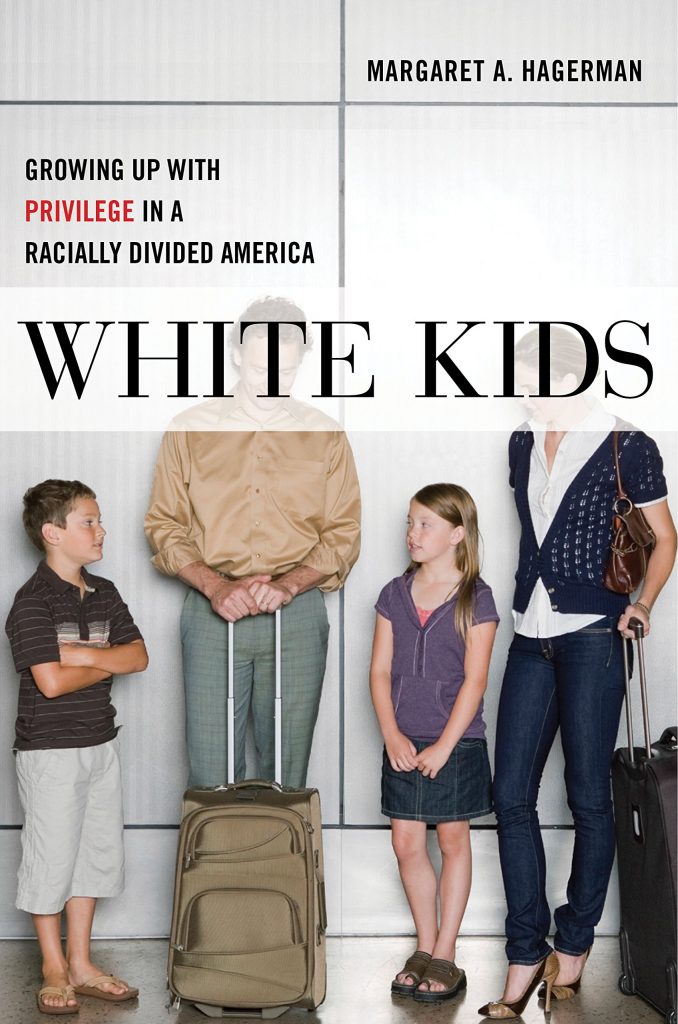(This summary written by Kim Marshall – The Marshall Memo)

In a recent article in Phi Delta Kappan, Margaret Hagerman (Mississippi State University) says many white parents and educators avoid talking about race and racism with elementary-school children because they believe it’s too early to engage with controversial and disturbing topics. The problem with this approach, says Hagerman, is that decades of research have shown that young children notice racial differences early on, talk to their peers about race, and pick up explicit and implicit societal rules. Some findings:
- By three months old, children can categorize people by race.
- By three years old, children can express explicit forms of racial bias.
- By five, children of color are conscious of existing racist stereotypes about their group and are negatively affected by them.
- By eight, white children learn that it’s socially unacceptable to express racial bias, but implicit bias continues.
African-American and Latino parents talk much more directly to their children about race, making a point of preparing them to navigate what they regard as a racist social structure.

“Children are constantly developing ideas about race by interpreting information about the world around them from a range of sources,” says Hagerman. “Kids are aware of racial patterns when they see who lives in their neighborhood, or who goes to their school, or who their parents are friends with, or who is asking for money when they visit a city center. Kids develop ideas about race through the media they consume, the books they read, the debates they have on social media, the volunteering and traveling they do, the summer camps they attend, and the news that is streamed into their house every day… And these kids are making decisions every single day about how they will act in the world.”
In her own research, Hagerman has found that children “were neither too young nor too innocent to pay attention to the world around them… All of these kids knew something about the larger debates of our time, and many were excited to talk to an adult who would listen to their opinions.” There was lots of confusion and misinformation: Was Rihanna white or black? Did black people have extra muscles in their legs that made them better at basketball? How to report a racist bully without him finding out?
Hagerman’s interviews with white students revealed a wide range of views. One eleven-year-old said, “Racism was a problem when all those slaves were around and that like bus thing and the water fountain. I mean, everything was crazy back in the olden days… But now, I mean, since Martin Luther King and like Eleanor Roosevelt, and how she went on the bus… after the 1920s and all that, things changed.” But other students were aware of racism, had noticed black customers being hassled in stores, and spoke out against racial profiling of Mexican-Americans in Arizona.
Students of color were clear that America was not “post-racial,” expressed anger, anxiety, and distress about the current political and racial climate, and had harsh words on President Trump’s role (“He puts inappropriate things on Twitter,” said a ten-year-old boy). Some described being taunted by students at school (“Build a wall!”) and were anxious about family members being deported.
Students told Hagerman that they wished family members and teachers had more conversations with them about these issues. She agrees, concluding that it’s important for adults to “provide young people with not only the necessary tools to help them understand race and racism but also the opportunity to be heard… Adults can never know young people’s questions, curiosities, fears, or anxieties about race in America without asking them.” (“Conversations with Kids About Race” by Margaret Hagerman in Phi Delta Kappan, April 2019 (Vol. 100, #7, p. 17-21))

Another great post, Paul! As you mentioned yesterday during our discussion about diversity at BFS, many of us were “carefully taught” to not speak of race. So with the imperative being that we should and must have such important conversations with children, I wonder if there are good models as to how to go about do that.
The best model is truth. Truth to talk with your kids, to listen to their concerns, to tell them about your own experiences with racism. White privilege is a privilege, but it is also a barrier that keeps people apart. Having spent the last decade becoming friends, and ultimately family with some Latina families, I have become incredibly humbled and grateful by our willingness and openness to talk about just about everything. As a result, I have fewer fears, am less anxious about people who look different from me, and I am much more open to a wider and more colorful and enriching world.